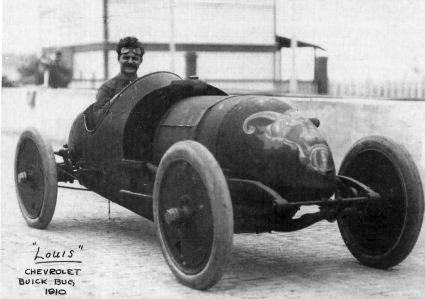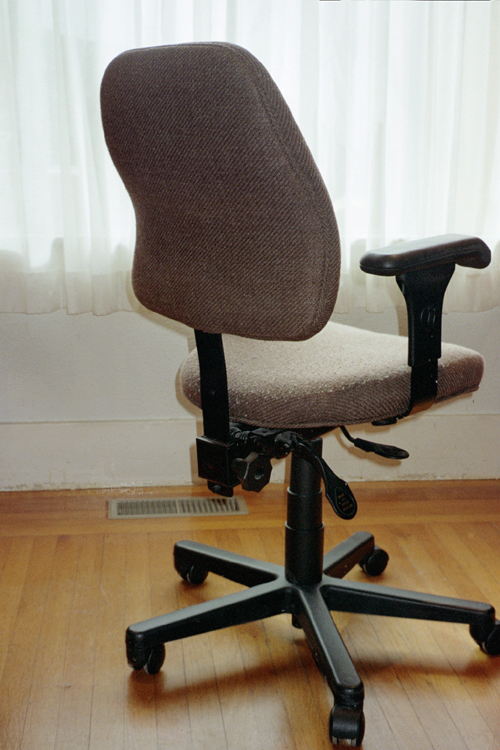|
Buick Century Cruiser
The Buick Century Cruiser was a dream car (concept car) created by Buick in 1969. It was conceived as being designed for automated highways, where steering wheels would be unnecessary. The vehicle offered swivel contour seats, a refrigerator, and a TV set. The computerized car would be programmed by punch cards with predetermined routes programmed by information provided by electric highway centers. The vehicle would be monitored by a radar Radar is a detection system that uses radio waves to determine the distance (''ranging''), angle, and radial velocity of objects relative to the site. It can be used to detect aircraft, ships, spacecraft, guided missiles, motor vehicles, w ... like device. The vehicle would also have a device to steer the vehicle manually as well as controlling speed. The canopy would slide open for easy cockpit access. It was related to the Firebird IV concept car and shares an appearance with the GM-X Stiletto. External links Buick Century Cruis ... [...More Info...] [...Related Items...] OR: [Wikipedia] [Google] [Baidu] |
Concept Car
A concept car (also known as a concept vehicle, show vehicle or prototype) is a car made to showcase new styling and/or new technology. They are often exhibited at motor shows to gauge customer reaction to new and radical designs which may or may not be mass-produced. General Motors designer Harley Earl is generally credited with inventing the concept car, and did much to popularize it through its traveling Motorama shows of the 1950s. Concept cars never go into production directly. In modern times all would have to undergo many changes before the design is finalized for the sake of practicality, safety, regulatory compliance, and cost. A " production-intent" prototype, as opposed to a concept vehicle, serves this purpose. Design Concept cars are often radical in engine or design. Some use non-traditional, exotic, or expensive materials, ranging from paper to carbon fiber to refined alloys. Others have unique layouts, such as gullwing doors, 3 or 5 (or more) wheels, or spe ... [...More Info...] [...Related Items...] OR: [Wikipedia] [Google] [Baidu] |
Buick
Buick () is a division of the American automobile manufacturer General Motors (GM). Started by automotive pioneer David Dunbar Buick in 1899, it was among the first American marques of automobiles, and was the company that established General Motors in 1908. Before the establishment of General Motors, GM founder William C. Durant had served as Buick's general manager and major investor. In the North American market, Buick is a premium automobile brand, selling luxury vehicles positioned above GM's mainstream brands, while priced below the flagship luxury Cadillac division. Buick's current target demographic according to ''The Detroit News'' is "a successful executive with family." After securing its market position in the late 1930s, when junior companion brand Marquette and Cadillac junior brand LaSalle were discontinued, Buick was positioned as an upscale luxury car below the Cadillac. During this same time period, many manufacturers were introducing V8 engines in their ... [...More Info...] [...Related Items...] OR: [Wikipedia] [Google] [Baidu] |
Automated Highway
Automation describes a wide range of technologies that reduce human intervention in processes, namely by predetermining decision criteria, subprocess relationships, and related actions, as well as embodying those predeterminations in machines. Automation has been achieved by various means including mechanical, hydraulic, pneumatic, electrical, electronic devices, and computers, usually in combination. Complicated systems, such as modern factories, airplanes, and ships typically use combinations of all of these techniques. The benefit of automation includes labor savings, reducing waste, savings in electricity costs, savings in material costs, and improvements to quality, accuracy, and precision. Automation includes the use of various equipment and control systems such as machinery, processes in factories, boilers, and heat-treating ovens, switching on telephone networks, steering, and stabilization of ships, aircraft, and other applications and vehicles with reduced human ... [...More Info...] [...Related Items...] OR: [Wikipedia] [Google] [Baidu] |
Steering Wheel
A steering wheel (also called a driving wheel (UK), a hand wheel, or simply wheel) is a type of steering control in vehicles. Steering wheels are used in most modern land vehicles, including all mass-production automobiles, buses, light and heavy trucks, as well as tractors. The steering wheel is the part of the steering system that is manipulated by the driver; the rest of the steering system responds to such driver inputs. This can be through direct mechanical contact as in recirculating ball or rack and pinion steering gears, without or with the assistance of hydraulic power steering, HPS, or as in some modern production cars with the assistance of computer-controlled motors, known as electric power steering. History Near the start of the 18th century, a large number of sea vessels appeared using the ship's wheel design, but historians are unclear when that approach to steering was first used. The first automobiles were steered with a tiller, but in 1894, Alfred Va ... [...More Info...] [...Related Items...] OR: [Wikipedia] [Google] [Baidu] |
Swivel Seat
A swivel, spinny, or revolving chair is a chair with a single central leg that allows the seat to rotate 360 degrees to the left or right. A concept of a rotating chair with swivel castors was illustrated by the Nuremberg patrician Martin Löffelholz von Kolberg in his 1505 technological illuminated manuscript, the so-called Codex Löffelholz, on folio 10r. It is purported that Thomas Jefferson drafted the United States Declaration of Independence in 1776 while sitting on a swivel chair of his own design. Types and examples Swivel chairs may have wheels on the base allowing the user to move the chair around their work area without getting up. This type is common in modern offices and are often also referred to as office chairs. Office swivel chairs, like computer chairs, usually incorporate a gas lift to adjust the height of the seat, but not usually large (e.g. recliner) swiveling armchairs. A draughtsman's chair is a swivel chair without wheels that is usually taller than ... [...More Info...] [...Related Items...] OR: [Wikipedia] [Google] [Baidu] |
Refrigerator
A refrigerator, colloquially fridge, is a commercial and home appliance consisting of a thermally insulated compartment and a heat pump (mechanical, electronic or chemical) that transfers heat from its inside to its external environment so that its inside is cooled to a temperature below the room temperature. Refrigeration is an essential food storage technique around the world. The lower temperature lowers the reproduction rate of bacteria, so the refrigerator reduces the rate of spoilage. A refrigerator maintains a temperature a few degrees above the freezing point of water. The optimal temperature range for perishable food storage is .Keep your fridge-freezer clean and ice-free ''BBC''. 30 April 2008 A similar device that maintains a temperature below the freezing point of water is called a freezer. The refrigerator replaced the icebox, which had been a common household appliance for almost a century and a half. The United States Food and Drug Administration recommends tha ... [...More Info...] [...Related Items...] OR: [Wikipedia] [Google] [Baidu] |
TV Set
A television set or television receiver, more commonly called the television, TV, TV set, telly, tele, or tube, is a device that combines a tuner, display, and loudspeakers, for the purpose of viewing and hearing television broadcasts, or using it as a computer monitor. Introduced in the late 1920s in mechanical form, television sets became a popular consumer product after World War II in electronic form, using cathode ray tube (CRT) technology. The addition of color to broadcast television after 1953 further increased the popularity of television sets in the 1960s, and an outdoor antenna became a common feature of suburban homes. The ubiquitous television set became the display device for the first recorded media in the 1970s, such as , VHS and later DVD. It has been used as a display device since the first generation of (e.g. Timex Sinclair 1000) and dedicated video game consoles (e.g. Atari) in the 1980s. By the early 2010s, flat-panel television incorporating liquid-cryst ... [...More Info...] [...Related Items...] OR: [Wikipedia] [Google] [Baidu] |
Punch Cards
A punched card (also punch card or punched-card) is a piece of stiff paper that holds digital data represented by the presence or absence of holes in predefined positions. Punched cards were once common in data processing applications or to directly control automated machinery. Punched cards were widely used through much of the 20th century in the data processing industry, where specialized and increasingly complex unit record machines, organized into semiautomatic data processing systems, used punched cards for data input, output, and storage. The IBM 12-row/80-column punched card format came to dominate the industry. Many early digital computers used punched cards as the primary medium for input of both computer programs and data. While punched cards are now obsolete as a storage medium, as of 2012, some voting machines still used punched cards to record votes. They also had a significant cultural impact. History The idea of control and data storage via punched holes w ... [...More Info...] [...Related Items...] OR: [Wikipedia] [Google] [Baidu] |
Radar
Radar is a detection system that uses radio waves to determine the distance (''ranging''), angle, and radial velocity of objects relative to the site. It can be used to detect aircraft, ships, spacecraft, guided missiles, motor vehicles, weather formations, and terrain. A radar system consists of a transmitter producing electromagnetic waves in the radio or microwaves domain, a transmitting antenna, a receiving antenna (often the same antenna is used for transmitting and receiving) and a receiver and processor to determine properties of the objects. Radio waves (pulsed or continuous) from the transmitter reflect off the objects and return to the receiver, giving information about the objects' locations and speeds. Radar was developed secretly for military use by several countries in the period before and during World War II. A key development was the cavity magnetron in the United Kingdom, which allowed the creation of relatively small systems with sub-meter resolution. Th ... [...More Info...] [...Related Items...] OR: [Wikipedia] [Google] [Baidu] |
General Motors Firebird
The General Motors Firebird comprises a quartet of prototype cars that General Motors (GM) engineered for the 1953, 1956, and 1959 Motorama auto shows. The cars' designers, headed by Harley Earl, took Earl's inspiration from the innovations in fighter aircraft design at the time. General Motors never intended the cars for production, but rather to showcase the extremes in technology and design that the company was able to achieve. GM preserved the prototype cars at the GM Heritage Center in Sterling Heights, Michigan. Models of the cars are in the permanent collection of the Henry Ford Museum in Dearborn, and the cars still make regular appearances at car shows. The tradition of offering prototype vehicles continued with the Pontiac Banshee series. From 1967 to 2002, the Pontiac division of GM marketed its Firebird line of pony cars, which had no direct relation to these series of Firebird concept cars. History General Motors researched the feasibility of gas turbine engine ... [...More Info...] [...Related Items...] OR: [Wikipedia] [Google] [Baidu] |
GM-X Stiletto
The GM-X Stiletto was a dream car created by General Motors in 1964. It was designed to have an aerospace design, aircraft steering, a maintenance monitoring system, toggle switch controls, and three way communication speakers. The instrument cluster featured 30 flashing lights, 29 controls and 16 gauges. You entered the car by folding the roof and the rear section up. It was not designed to be driven and was just an empty shell, but the rear section was used in a more modest form in the 1967 Cadillac Eldorado The Cadillac Eldorado is a luxury car manufactured and marketed by Cadillac from 1952 until 2002 over twelve generations. The Eldorado was at or near the top of the Cadillac line. The original 1953 Eldorado convertible and the Eldorado Brougham .... It shares an appearance with the Buick Century Cruiser. References {{reflist External links GM Photo Store X Stiletto ... [...More Info...] [...Related Items...] OR: [Wikipedia] [Google] [Baidu] |







.jpg)


